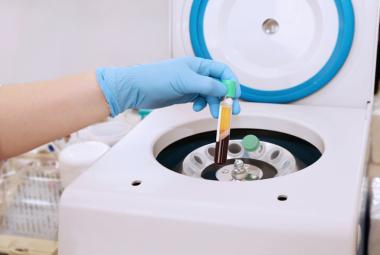The importance of managing maternal postpartum pain is widely recognized. Yet how to provide treatment that is protective of the neonate while simultaneously providing adequate maternal therapy has not been determined. Just under half of the infants born in North America are delivered by cesarean section or vaginally after episiotomy and frequently a regimen containing some form of codeine is prescribed for analgesia.(1) Although the American Academy of Pediatrics has classified codeine as a medication that is compatible with breastfeeding(2), at a recent conference of the Australian and New Zealand College of Anesthetists (ANZCA) a recommendation to limit postpartum codeine usage in breastfeeding women was issued. In addition, a study from the Motherisk Center in Canada provided evidence that some infants may be a risk if their mothers consume codeine. Many women are rightly confused by this seemingly conflicting information. However, before the therapeutic risks can be fully understood, codeine metabolism as well as the effects of codeine on certain subsets of the population must be explained.
Codeine is a prodrug, which means that when administered it is therapeutically inactive. In order for codeine’s analgesic properties to be effective, the drug must be metabolized into morphine by the cytochrome P450 2D6 (CYP2D6) enzymes that are found in the liver. In most humans, only 7-10% of the administered codeine dose is biotransformed into morphine. Out of that 7-10% most of the morphine becomes the inactive form of morphine. In each step of the codeine activation process, an enzyme derived from the individual’s unique genetic components is required. Thus each individual will make differing amounts of morphine depending on their genetic makeup.
The reason that the American Academy of Pediatrics recommends codeine as a safe drug for breastfeeding women is because in the general population, most women possess 2 functional copies of the gene that codes for the drug metabolizing, liver enzymes (CYP2D6). This genotype allows for the normal metabolism of codeine. However, there are two genetic subsets of individuals in whom codeine is not a preferred analgesic. These subsets include individuals that have no active versions of the metabolizing gene, meaning that the drug is not activated and codeine simply doesn’t work in these individuals. A second more concerning group, however; have multiple duplications of the gene and these individuals can unknowingly transform up to 20% of their codeine dose into morphine, yielding an excessive buildup of morphine that is potentially toxic to a breastfeeding neonate. This latter caused the death of an infant recently in Canada. These individuals who carry duplicate CYP2D6 genes are known as ultra-rapid metabolizers (UMs) and should be extremely cautious of using codeine. The problem is that we don’t know who has duplicate copies of the gene.
Millions of women use codeine as an analgesic to treat post-partum pain each year and typically only those who are ultra-rapid codeine metabolizers experience untoward results in regards to infant toxicity. Unfortunately, genetic testing for duplicate drug metabolizer genes is not common place in clinical evaluations. Thus, the ANZCA has issued an umbrella warning that all breastfeeding women should limit their use of codeine to 4 days. However, some women who are uncertain of their genetic predisposition to rapid drug metabolism while recovering from invasive deliveries find that they require more than non-steroidal anti-inflammatory drugs (NSAIDs), such as ibuprofen, after the recommended 4 days of codeine therapy. Thus, it is evident that these women must be provided with safety recommendations for breastfeeding while using codeine as well as analgesic alternatives.
During the first two weeks of life, the hepatic and renal systems in neonates are not fully developed, which predisposes neonates to toxicity from medications found in breastmilk.(3) Obviously, this is a sensitive time for the neonate and maternal observation for infant CNS depression should be heightened. Symptoms of CNS depression include: failure to feed, sedation, limpness and failure to gain weight. If your child exhibits any of these symptoms, consult your physician immediately. In most circumstances, the mother and the breastfed infant should both experience symptoms of CNS depression. (1) Thus if you are experiencing any of the symptoms of CNS depression, including sedation and grogginess, it is likely that your breastfed infant is also. Use this as a warning and seek medical attention for your infant.
CNS depression symptoms typically appear in continuously breastfed infants after 4 days of maternal codeine treatment. This response is most likely due to an accumulation of morphine in the infant.(1) Since studies have indicated a dose-dependent relationship between heightened maternal codeine levels and infant toxicity(1), (3), mothers who are ultra-rapid metabolizers of codeine (or uncertain of their status) should be advised to take lower doses of codeine that taper off after 4 days of recovery time or utilize a non-codeine analgesic. The InfantRisk Center commonly advises physicians that hydrocodone is a better choice than codeine. Hydrocodone is metabolized through a different pathway that does not yield morphine as a byproduct and is not subject to hypermetabolism. Thus hydrocodone is a preferred alternative especially for mothers who are ultra-rapid metabolizers of codeine or those that are uncertain of their possible ultra-rapid metabolizer status.(4)
It is important to remember that the maternal-fetal bond does not expire after birth, but instead begins at that point. While infant safety is of utmost importance, maternal comfort should not be sacrificed when alternatives are present. Without proper postpartum care, the bond that a mother and child share may not be fully realized. Thus be sure to discuss your options for postpartum care with your physician. As always, if you have further questions call the Infantrisk Center at (806)-352-2519.
Laura Muscianese MS1
Thomas W. Hale, Ph.D.
ABC Australia Press Release:
http://www.abc.net.au/news/stories/2011/07/01/3258525.htm?section=justin
References:
1. Madadi P, Ross CJ, Hayden MR, Carleton BC, Gaedigk A, Leeder JS, et al. Pharmacogenetics of neonatal opioid toxicity following maternal use of codeine during breastfeeding: a case-control study. Clin Pharmacol Ther. 2009;85(1):31-5.
2. Committee on Drugs, American Academy of Pediatrics. The transfer of drugs and other chemicals into human milk. Pediatrics 2001;108:776-89
3. Berlin CM, Jr., Paul IM, Vesell ES. Safety issues of maternal drug therapy during breastfeeding. Clin Pharmacol Ther. 2009;85(1):20-2.
4. Hale TW. Berens P. Clinical Therapy in Breastfeeding Patients. Amarillo: Hale, 2010.







